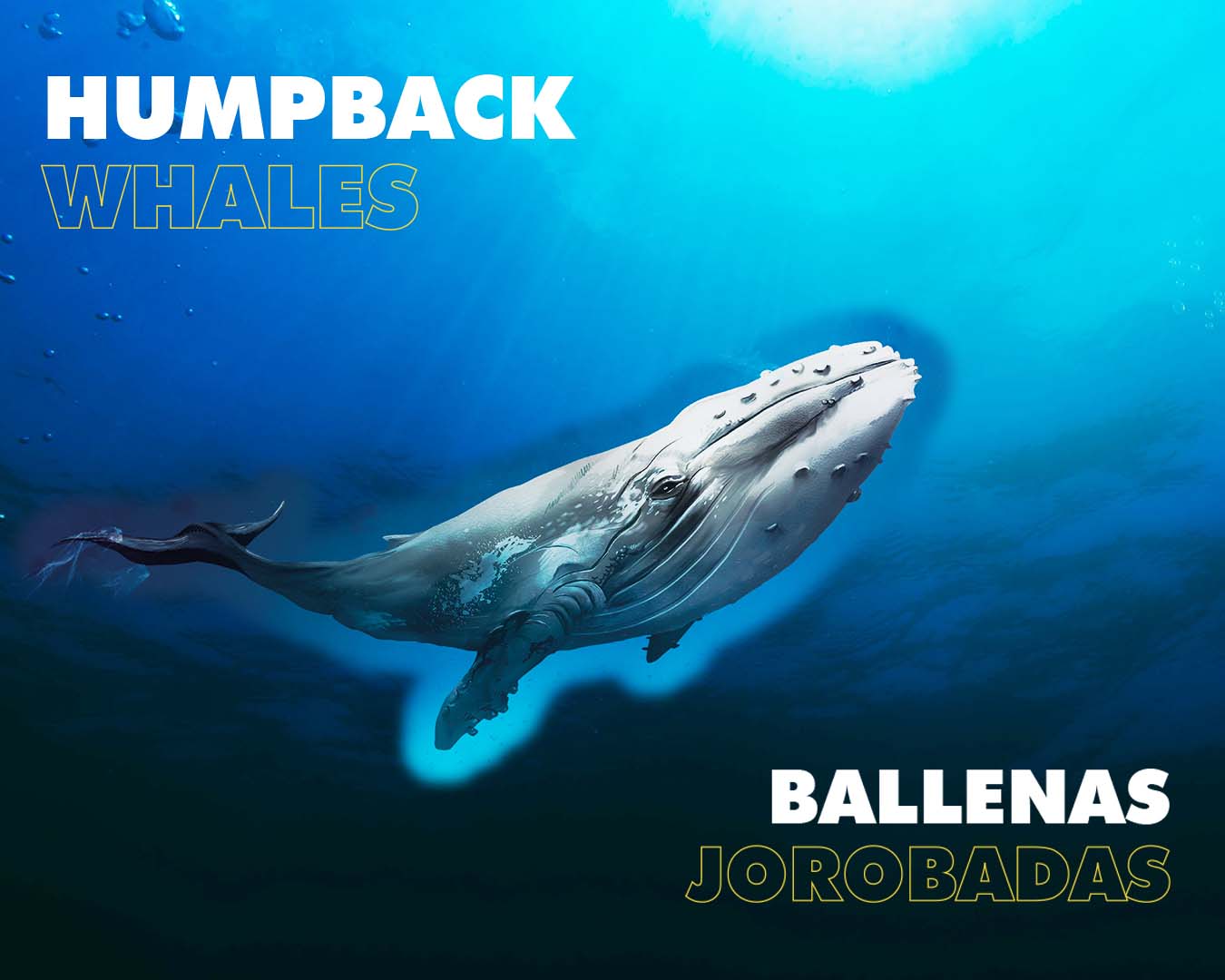The scientific name "Megaptera novaeangliae" translates to "New England big-finned whale," referring to the large size of its pectoral fins.

The singing of the whales
- Whales generate sounds by forcing air through their huge nasal cavity (spiracle).
- The air sac changes size to change the note or volume.
- It is believed that with the songs they indicate their location to their companions.
- Only the males sing, especially during the breeding season.
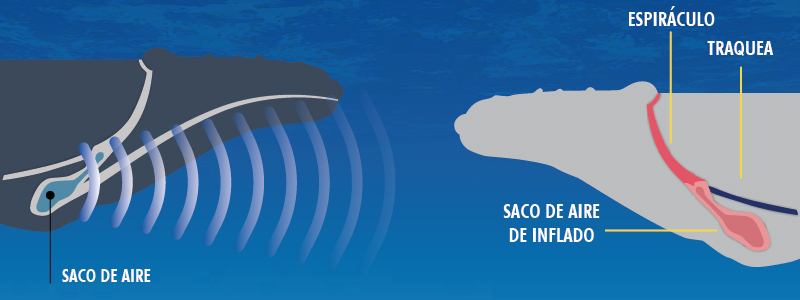
they have a big heart
This organ in the Humpback whales It can weigh up to 150 kg.
They love to sing
Humpback whales are very singing. His songs are heard up to 60 kilometers away. What a voice!
How they feed?
Humpback whales upon detecting schools of krill work collectively for food.
That same method is used with small fish and they can eat up to 1400 kilos in a day.
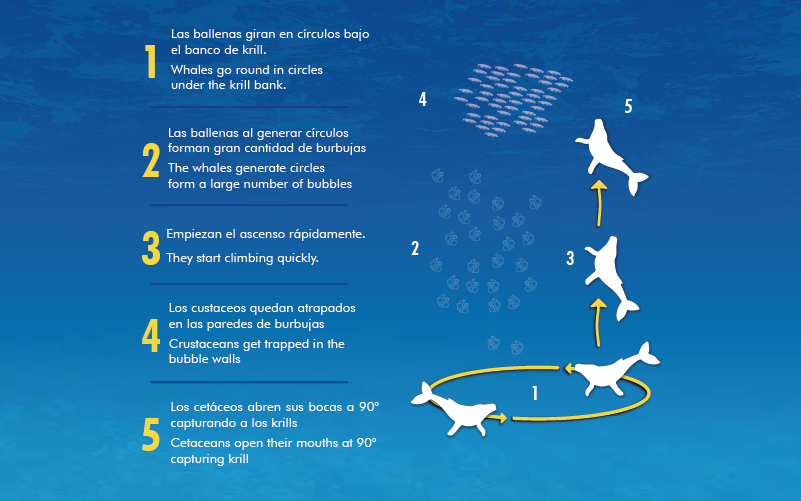
A dance that captivates
In addition to their songs, experts in marine life assure that the dance of the Humpback whales they are part of their courtship, birth and upbringing.
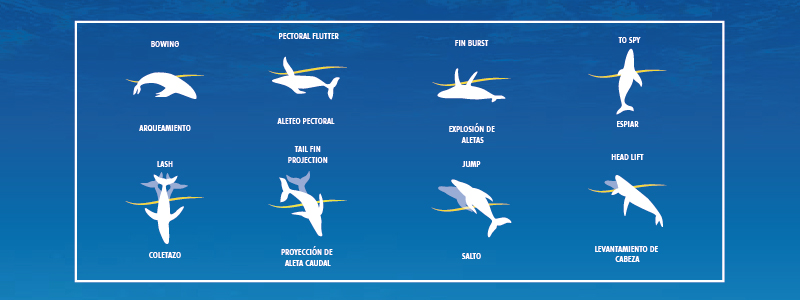
Identification
They have black and white spots on their tails, unique to each specimen, like fingerprints on people. There are 5 levels of pigmentation.
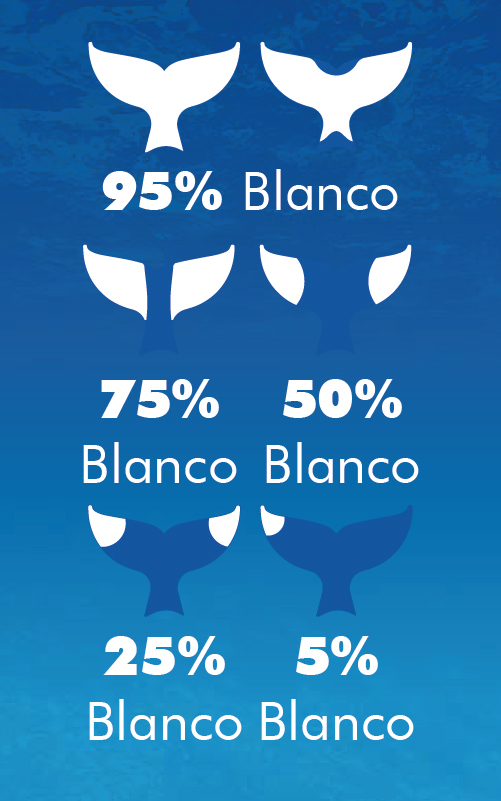
Whale Distribution
Humpback whales make one of the largest mammal migrations, from the poles to the equator.
The humpback whale is found in all the oceans of the world, but has changes in distribution according to the summer seasons and winter, they have several routes to feed, others to give birth and others to mate.

Basic rules of Whale Watching
- Authorized vessels under 10m, approach 60m for a maximum of 30 minutes.
- Authorized vessels greater than 10m, approach 80m for a maximum of 30 minutes.
- Waiting and unauthorized vessels at 240m


